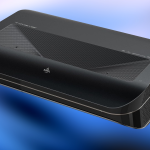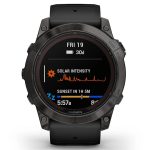It’s a simple truth: where there’s a Dyson product, there’s a dupe. When the brand’s Supersonic hair dryer first released in 2016, it hit the market with a promise to reinvent what a blow dryer could be.
Seven years later, it’s clear that Dyson made an impact with its first foray into beauty tech. While it’s an impressive product, you might not need to pay upwards of $400 to get the home hair dry experience you’re looking for.
What makes the Dyson Supersonic special?
The Supersonic first made waves because in typical Dyson fashion, of its upgraded, futuristic design. It’s the Eve to your classic blow dryer’s WALL-E.
Dyson is known for this aesthetic, but the sleek look also has a function. The ring-shaped head ditches the vented and coiled model of the traditional hair dryer and houses the tiny V9 motor in the handle. The combination of the V9 motor and the Air Multiplier technology makes for a dryer that clocks in at only 1.8 pounds, yet still delivers a powerful airflow that’s notably quieter than the roar of a traditional dryer.
To minimize damage, the Supersonic also measures the air temp up to 20 times per second and uses a built-in ionizer to minimize static and give the hair a sleek finish, which brings us to a quick ionizer science lesson. So ionizers are pretty common in higher-end air dryers. Why? Most work by blowing negative ions at wet hair to reduce static electricity by sealing the hair cuticle and taking down the power of that positive ionic charge (aka what’s causing that annoying frizz). As negative ions make contact with hair, they’re also dispersing the positive ions of water, therefore cutting down on your drying time and reducing damage in the process. Basically, it’s a good part of the reason the Dyson provides such quick and excellent results, and why ionizers will run you some more money — they do more than simply dry the hair.
Magnetic attachments designed to easily snap onto the blow dryer round out the futuristic feel of the Supersonic, with five included — a styling concentrator, a flyaway attachment, a diffuser, a gentle air attachment, and a wide tooth comb. It’s a nice array of included nozzles even for high-end dryers, which might typically include three to four attachments at the most.
Why is the Dyson Supersonic so expensive?
At $429, the overall package of the Supersonic is definitely an investment. However, you’re paying for a high-end motor that’s built to last, multiple heat settings to protect hair, an innovative design, and of course, the ionic tech. Other dryers from popular hot tool brands like T3, ghd, and Harry Josh boasting some similar features will run you anywhere from $150 to $350, but none quite capture the complete offerings of the Supersonic.
Still, it means there are plenty of decent dupes out there.
How to choose the best Dyson Supersonic dupe
There are a lot of options for luxury blow dryers out there and a lot of Amazon dupes that attempt to look like the Dyson but skimp out on quality.
While it’s not entirely feasible to find an exact one-to-one Supersonic experience for a fraction of the price, it is possible to find a dupe you’re more than satisfied with. The trick is to identify what exactly draws you to the Supersonic in the first place.
If you’re into ring design, and the appeal of something lightweight, the Laifen Swift is a near replica, even in how the airflow sounds.
If you like the idea of having a lot of attachments to customize your styling session, and still get a similar compact look, the Shark HyperAIR gets the job done.
If money isn’t your biggest concern and you’re into a dryer that puts the tech in beauty tech, the Zuvi Halo is a strong choice.
If what’s most appealing about getting a dupe is the whole saving a ton of money aspect, there are respectable hair dryers to be had under $100. We’re particular fans of the BaBylissPRO Nano Titanium dryer.
For a deeper dive on how each of these blow dryers performed and info on where to buy them, read on.







